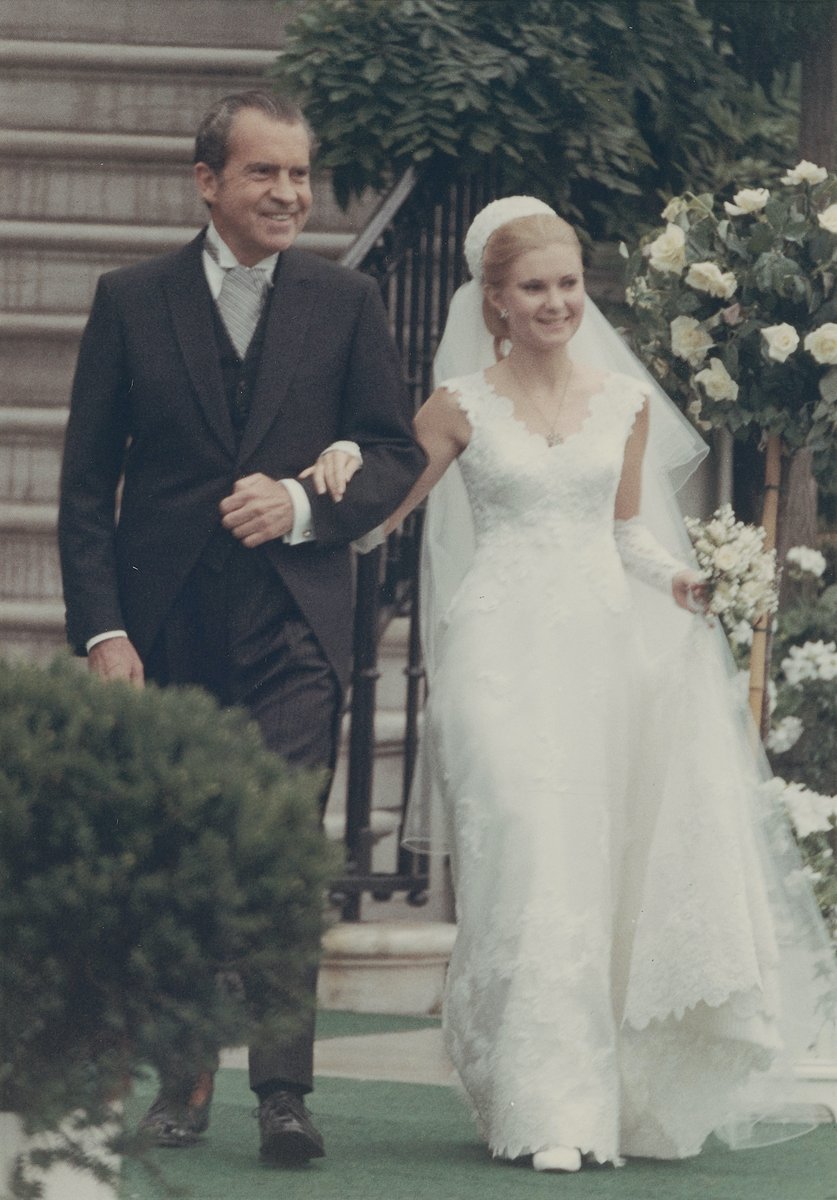#OTD in 1971, Tricia Nixon, daughter of President Richard Nixon and First Lady Patricia Nixon, married longtime boyfriend Edward Cox in the White House Rose Garden.
Image Credit: Courtesy of Henry & Carole Haller and Family
Image Credit: Courtesy of Henry & Carole Haller and Family

As 400 wedding guests entered the Rose Garden, they were greeted by music played by the U.S. Army Strings.
Image Credit: Courtesy of Henry & Carole Haller and Family
Image Credit: Courtesy of Henry & Carole Haller and Family

It was a carefully planned affair. The bridesmaid dresses and décor were coordinated to match the color of the flowers in the garden, and Tricia Nixon’s dress of organdy was covered in embroidery and pearl detail.
Image Credit: Courtesy of Henry & Carole Haller and Family
Image Credit: Courtesy of Henry & Carole Haller and Family

After Nixon and Cox took their vows and sealed their union, the rain began again, and the party quickly moved inside. A fifteen-piece orchestra played music for the couple and their guests in the East Room.
Image Credit: Courtesy of Henry & Carole Haller and Family
Image Credit: Courtesy of Henry & Carole Haller and Family

An impressive spread of food and refreshments awaited the wedding party in the State Dining Room—the star being White House Executive Chef Henry Haller’s lemon wedding cake, a 350-pound masterpiece of six tiers.
Image Credit: Courtesy of Henry & Carole Haller and Family
Image Credit: Courtesy of Henry & Carole Haller and Family

That morning, President Richard Nixon wrote his daughter a letter:
Image Credit: Courtesy of Henry & Carole Haller and Family
Image Credit: Courtesy of Henry & Carole Haller and Family

Dear Tricia,
Well, today is the day you begin a long and exciting journey . . . You have made the right choice and I am sure Edward and you will look back on this time and say—‘the day was indeed splendid.’
Love, Daddy
Image Credit: Courtesy of Henry & Carole Haller and Family
Well, today is the day you begin a long and exciting journey . . . You have made the right choice and I am sure Edward and you will look back on this time and say—‘the day was indeed splendid.’
Love, Daddy
Image Credit: Courtesy of Henry & Carole Haller and Family

Curious about other weddings at the White House? Then take “A Closer Look” at White House weddings in the #WHExperience mobile app! You’ll learn more about the extravagant cakes and the couples who said “I do” at 1600 Pennsylvania Avenue: whitehousehistory.org/digital-librar…
• • •
Missing some Tweet in this thread? You can try to
force a refresh





















